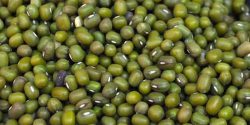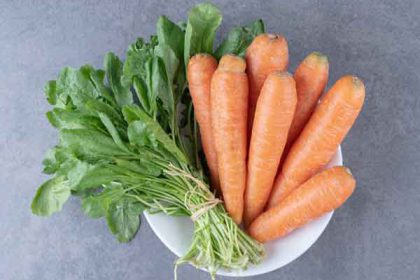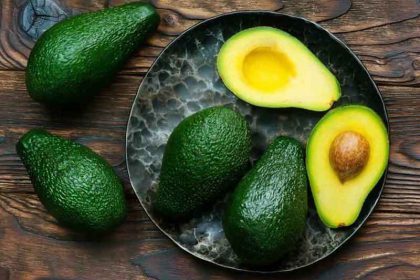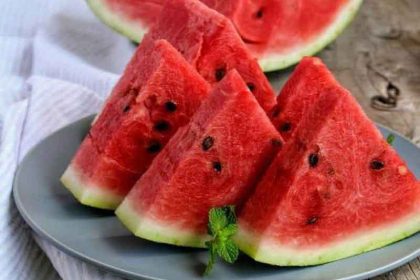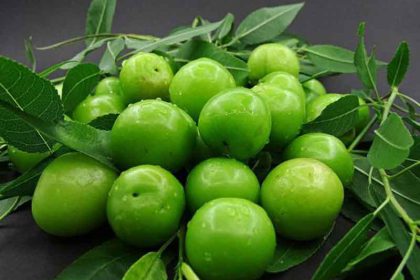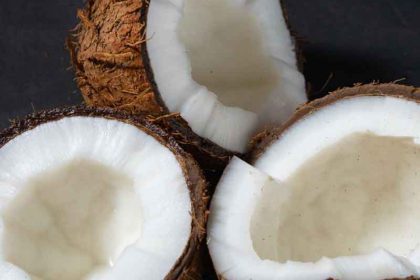Paprika benefits for the stomach and weight loss
Paprika

Paprika benefits for the stomach and weight loss on Nicholi site. We hope this article will be of interest to you.
Paprika is a spice derived from dried peppers and offers several potential health benefits. It contains antioxidants that protect cells from oxidative damage, potentially reducing the risk of chronic diseases. Compounds in paprika, such as capsaicin, have anti-inflammatory effects that can help reduce inflammation in the body. The carotenoids in paprika, like lutein and zeaxanthin, are beneficial for eye health and can protect against age-related macular degeneration. Paprika also contains vitamin C, which supports the immune system and aids in wound healing. It can stimulate digestion, improve gastric acid secretion, and promote digestive health. Capsaicin in paprika may have positive effects on cardiovascular health, including lowering blood pressure and improving blood circulation. Some studies suggest that capsaicin can boost metabolism and increase fat oxidation, potentially assisting in weight management. However, certain individuals may experience side effects or reactions to paprika, such as allergic reactions, gastrointestinal discomfort, skin irritation, and interactions with medications. It’s advisable to consume paprika in moderation and consult with a healthcare professional if needed.
Paprika Benefits
Paprika is a spice derived from ground, dried peppers, typically from the Capsicum family. While it is primarily used to add flavor and color to foods, paprika also offers several potential health benefits. Here are some of the benefits associated with paprika:
Antioxidant properties: Paprika contains various antioxidants, including carotenoids like beta-carotene, lutein, and zeaxanthin. These antioxidants help protect the body’s cells from oxidative damage caused by free radicals, potentially reducing the risk of chronic diseases and supporting overall health.
Anti-inflammatory effects: Some compounds found in paprika, such as capsaicin, have anti-inflammatory properties. These properties may help reduce inflammation in the body, which can be beneficial for conditions like arthritis and other inflammatory disorders.
Eye health: The carotenoids present in paprika, such as lutein and zeaxanthin, are known to benefit eye health. They accumulate in the retina and help protect against age-related macular degeneration (AMD) and other eye conditions.
Immune system support: Paprika contains vitamin C, which is essential for a healthy immune system. Adequate vitamin C intake can help strengthen the immune system, protect against infections, and promote wound healing.
Digestive health: Paprika can stimulate digestion and increase gastric acid secretion, aiding in the breakdown of food. It may help improve digestion, relieve indigestion, and alleviate digestive discomfort.
Cardiovascular health: The capsaicin content in paprika may have positive effects on cardiovascular health. It can help lower blood pressure, improve blood circulation, and reduce the risk of blood clots, potentially benefiting heart health.
Metabolism and weight management: Some studies suggest that capsaicin found in paprika may help boost metabolism and increase fat oxidation. This can potentially support weight management and assist in weight loss efforts.
Paprika side effects
Paprika is generally safe for most people when consumed in moderate amounts as a spice. However, some individuals may experience certain side effects or reactions. Some potential side effects of paprika:
Allergic reactions: Some individuals may be allergic to paprika or have sensitivities to the compounds found in it. Allergic reactions can range from mild symptoms like itching, rash, or hives to more severe symptoms such as difficulty breathing, swelling, or anaphylaxis. If you have a known allergy to peppers or other spices, it’s advisable to avoid paprika.
Gastrointestinal discomfort: In some cases, consuming large amounts of paprika or highly spicy varieties may cause gastrointestinal discomfort. This can include symptoms like stomach pain, indigestion, heartburn, or diarrhea. It’s recommended to consume paprika in moderation and listen to your body’s response.
Skin irritation: Direct contact with paprika powder or spice may cause skin irritation, especially in individuals with sensitive skin. It can lead to redness, itching, or a burning sensation. It’s advisable to handle paprika with caution and wash your hands thoroughly after handling it.
Interactions with medications: If you’re taking certain medications, such as anticoagulants (blood thinners) or medications for high blood pressure, paprika may interact with them. Capsaicin, a compound found in paprika, can affect blood clotting and may increase the risk of bleeding or interfere with the action of certain medications. If you have any concerns, it’s best to consult with a healthcare professional.
Pregnancy and breast-feeding: Spices like paprika are generally considered safe when used in culinary amounts during pregnancy or breastfeeding. However, it’s advisable to consume paprika in moderation and consult with a healthcare professional if you have any specific concerns or underlying conditions.
Is paprika good for weight loss?
Paprika is generally safe for most people when consumed in moderate amounts as a spice. However, some individuals may experience certain side effects or reactions. Here are some potential side effects of paprika:
Allergic reactions: Some individuals may be allergic to paprika or have sensitivities to the compounds found in it. Allergic reactions can range from mild symptoms like itching, rash, or hives to more severe symptoms such as difficulty breathing, swelling, or anaphylaxis. If you have a known allergy to peppers or other spices, it’s advisable to avoid paprika.
Gastrointestinal discomfort: In some cases, consuming large amounts of paprika or highly spicy varieties may cause gastrointestinal discomfort. This can include symptoms like stomach pain, indigestion, heartburn, or diarrhea. It’s recommended to consume paprika in moderation and listen to your body’s response.
Skin irritation: Direct contact with paprika powder or spice may cause skin irritation, especially in individuals with sensitive skin. It can lead to redness, itching, or a burning sensation. It’s advisable to handle paprika with caution and wash your hands thoroughly after handling it.
Interactions with medications: If you’re taking certain medications, such as anticoagulants (blood thinners) or medications for high blood pressure, paprika may interact with them. Capsaicin, a compound found in paprika, can affect blood clotting and may increase the risk of bleeding or interfere with the action of certain medications. If you have any concerns, it’s best to consult with a healthcare professional.
Pregnancy and breast-feeding: Spices like paprika are generally considered safe when used in culinary amounts during pregnancy or breastfeeding. However, it’s advisable to consume paprika in moderation and consult with a healthcare professional if you have any specific concerns or underlying conditions.
Paprika health benefits and side effects
Paprika is generally safe for most people when consumed in moderate amounts as a spice. However, some individuals may experience certain side effects or reactions. Such as:
Allergic reactions: Some individuals may be allergic to paprika or have sensitivities to the compounds found in it. Allergic reactions can range from mild symptoms like itching, rash, or hives to more severe symptoms such as difficulty breathing, swelling, or anaphylaxis. If you have a known allergy to peppers or other spices, it’s advisable to avoid paprika.
Gastrointestinal discomfort: In some cases, consuming large amounts of paprika or highly spicy varieties may cause gastrointestinal discomfort. This can include symptoms like stomach pain, indigestion, heartburn, or diarrhea. It’s recommended to consume paprika in moderation and listen to your body’s response.
Skin irritation: Direct contact with paprika powder or spice may cause skin irritation, especially in individuals with sensitive skin. It can lead to redness, itching, or a burning sensation. It’s advisable to handle paprika with caution and wash your hands thoroughly after handling it.
Interactions with medications: If you’re taking certain medications, such as anticoagulants (blood thinners) or medications for high blood pressure, paprika may interact with them. Capsaicin, a compound found in paprika, can affect blood clotting and may increase the risk of bleeding or interfere with the action of certain medications. If you have any concerns, it’s best to consult with a healthcare professional.
Pregnancy and breast-feeding: Spices like paprika are generally considered safe when used in culinary amounts during pregnancy or breastfeeding. However, it’s advisable to consume paprika in moderation and consult with a healthcare professional if you have any specific concerns or underlying conditions.
Paprika benefits for hair
While paprika is primarily known as a spice used in culinary applications, it is not typically associated with specific benefits for hair health. Some nutrients found in paprika may indirectly contribute to healthy hair. Here’s a breakdown:
Vitamin C: Paprika contains vitamin C, which is essential for the production of collagen. Collagen is a protein that provides structure and strength to the hair strands. Adequate vitamin C intake can support the overall health of the hair.
Antioxidants: Paprika is rich in antioxidants, including carotenoids like beta-carotene and lutein. Antioxidants help protect the hair follicles and cells from oxidative stress caused by free radicals, potentially promoting a healthier scalp and hair.
Blood circulation: Capsaicin, a compound found in paprika, may help improve blood circulation. Proper blood flow to the scalp is crucial for delivering essential nutrients to the hair follicles, promoting healthy hair growth.
Paprika tea benefits
Paprika tea is not a commonly known or widely consumed beverage, so there is limited information available about its specific benefits. Paprika is primarily used as a spice in culinary applications rather than as a tea ingredient. However, here are some potential benefits associated with consuming paprika or related compounds:
Antioxidant properties: Paprika contains antioxidants like carotenoids, which help protect the body’s cells from oxidative damage caused by free radicals. Consuming antioxidants can have overall health benefits and may reduce the risk of chronic diseases.
Anti-inflammatory effects: Some compounds found in paprika, such as capsaicin, have anti-inflammatory properties. These properties may help reduce inflammation in the body, which can be beneficial for conditions like arthritis and other inflammatory disorders.
Digestive health: Paprika, when consumed in moderate amounts, may help stimulate digestion and increase gastric acid secretion, aiding in the breakdown of food. This can potentially improve digestion and alleviate digestive discomfort.
Metabolism and weight management: Capsaicin, a compound found in paprika, has been associated with boosting metabolism and increasing fat oxidation. It may potentially support weight management efforts.
Whitening paprika benefits for skin
There is limited scientific evidence to suggest that paprika has specific whitening properties for the skin. Paprika is primarily used as a spice in culinary applications and is not commonly associated with skin-whitening effects. However, it does contain certain nutrients and compounds that can contribute to overall skin health. Here are some potential benefits of paprika for the skin:
Antioxidant properties: Paprika contains antioxidants like carotenoids, which can help protect the skin from oxidative damage caused by free radicals. This may contribute to maintaining a healthy and youthful appearance.
Vitamin C content: Paprika is a source of vitamin C, which plays a crucial role in collagen production. Collagen is a protein that helps keep the skin firm and elastic, promoting a youthful appearance.
Anti-inflammatory effects: Some compounds found in paprika, such as capsaicin, have anti-inflammatory properties. These properties may help soothe and calm the skin, reducing redness and inflammation.
Improved blood circulation: Capsaicin, present in paprika, has been shown to improve blood circulation when applied topically. Enhanced blood circulation can help deliver nutrients and oxygen to the skin cells, promoting a healthy complexion.
Sweet paprika benefits for skin
Sweet paprika, like other types of paprika, is primarily used as a spice in culinary applications. While it may not have specific skin benefits associated with its use, it contains certain nutrients and compounds that can contribute to overall skin health. Here are some potential benefits of sweet paprika for the skin:
Antioxidant properties: Sweet paprika contains antioxidants like carotenoids, which help protect the skin from oxidative damage caused by free radicals. Antioxidants contribute to maintaining a healthy and youthful appearance of the skin.
Vitamin C content: Sweet paprika is a source of vitamin C, which is essential for collagen production. Collagen is a protein that provides structure and elasticity to the skin, promoting a firm and youthful appearance.
Anti-inflammatory effects: Some compounds found in sweet paprika, such as capsaicin, have anti-inflammatory properties. These properties may help soothe and calm the skin, reducing redness and inflammation.
Blood circulation: Capsaicin, present in sweet paprika, has been shown to improve blood circulation when applied topically. Enhanced blood circulation can help deliver nutrients and oxygen to the skin cells, promoting a healthy complexion.
Benefits of paprika for weight loss
Paprika itself does not have direct weight loss properties. However, it can be a flavorful addition to your meals while providing certain benefits that may indirectly support weight loss efforts. Here’s how paprika can potentially contribute to weight management:
Metabolism boost: Paprika contains capsaicin, a compound that has been linked to boosting metabolism and increasing fat oxidation. While the effects may be modest, these properties can potentially support weight management efforts by increasing calorie expenditure.
Flavorful and satisfying: Adding paprika to your meals can enhance their taste without adding significant calories. This can help make your meals more enjoyable, and satisfying, and potentially reduce the desire to overeat or indulge in less healthy options.
Low-calorie spice: Paprika is relatively low in calories, making it a great choice to add flavor to your dishes without significantly increasing caloric intake. By opting for flavorful spices like paprika, you can enhance the taste of your meals while keeping the overall calorie count in check.
Healthy food choices: Incorporating paprika into your cooking can encourage the use of fresh and nutritious ingredients. For example, using paprika to season grilled vegetables or lean proteins can make them more appealing and encourage the consumption of healthier food options.
Blood sugar regulation: Some research suggests that capsaicin found in paprika may help regulate blood sugar levels and improve insulin sensitivity. Balanced blood sugar levels can contribute to better appetite control and weight management.
How to make a paprika face mask?
While paprika is primarily used as a spice in culinary applications, it is not commonly used in homemade face masks. However, if you’re interested in experimenting with a paprika face mask, here’s a simple recipe you can try:
Ingredients:
1 tablespoon of paprika powder (choose a mild or sweet paprika variety)
1 tablespoon of honey
1 tablespoon of plain yogurt or aloe vera gel (optional, for soothing properties)
1 teaspoon of lemon juice (optional, for brightening effects)
Instructions:
In a small bowl, combine the paprika powder with the honey. Mix well to create a paste-like consistency. Adjust the quantity of honey if needed to achieve the desired texture.
Optional: If you have sensitive skin or want to add soothing properties, add a tablespoon of plain yogurt or aloe vera gel to the mixture. Stir well to combine.
Optional: For additional brightening effects, add a teaspoon of lemon juice to the mixture. Lemon juice contains natural acids that can help even out skin tone and improve radiance. However, be cautious as lemon juice can be irritating for some individuals, so perform a patch test before using it on your face.
Cleanse your face thoroughly and pat it dry.
Apply the paprika face mask evenly to your face, avoiding the delicate eye area. You can use clean fingertips or a facial brush to apply the mask.
Leave the mask on for about 10-15 minutes.
Rinse off the mask with lukewarm water and gently pat your face dry.
Follow up with your regular skincare routine, such as toner, moisturizer, or serum.
Note: It’s important to perform a patch test before applying the paprika face mask to your entire face, especially if you have sensitive skin. Apply a small amount of the mixture to a small area of your skin, such as the inside of your wrist or forearm, and wait for 24 hours to check for any adverse reactions.
Smoked paprika benefits for skin
Smoked paprika, like other varieties of paprika, is primarily used as a spice in culinary applications. While it may not have specific benefits for the skin associated with its use, it contains certain compounds and nutrients that can contribute to overall skin health. Here are some potential benefits of smoked paprika for the skin:
Antioxidant properties: Smoked paprika contains antioxidants, such as carotenoids, which can help protect the skin from oxidative damage caused by free radicals. Antioxidants contribute to maintaining a healthy and youthful appearance of the skin.
Vitamin C content: Smoked paprika is a source of vitamin C, which is essential for collagen production. Collagen is a protein that provides structure and elasticity to the skin, promoting a firm and youthful appearance.
Anti-inflammatory effects: Some compounds found in smoked paprika, such as capsaicin, have anti-inflammatory properties. These properties may help soothe and calm the skin, reducing redness and inflammation.
Blood circulation: Capsaicin, present in smoked paprika, has been shown to improve blood circulation when applied topically. Enhanced blood circulation can help deliver nutrients and oxygen to the skin cells, promoting a healthy complexion.
Paprika weight loss drink
While paprika is commonly used as a spice in cooking, it is not typically consumed as a standalone weight-loss drink. However, you can incorporate paprika into a healthy and balanced weight-loss drink by combining it with other ingredients that promote weight management. Here’s a simple recipe for a paprika-infused weight-loss drink:
Ingredients:
1 teaspoon of paprika powder (choose a mild or sweet paprika variety)
1 cup of warm water
Juice of half a lemon
1 teaspoon of honey (optional, for sweetness)
Instructions:
In a cup, add the paprika powder and warm water. Stir well to dissolve the paprika.
Squeeze the juice of half a lemon into the cup.
Optional: If you prefer a slightly sweeter taste, you can add a teaspoon of honey and stir until dissolved.
Mix all the ingredients together until well combined.
Allow the drink to steep for a few minutes to infuse the flavors.
Stir the drink again before consuming.
Drink it warm or let it cool down to room temperature, according to your preference.
Is too much paprika bad for you?
Consuming moderate amounts of paprika as a spice is generally considered safe for most people. Paprika is a commonly used culinary ingredient and is generally well-tolerated. However, consuming excessive amounts of paprika or any spice may have some potential drawbacks. Here are a few considerations:
Capsaicin sensitivity: Paprika contains capsaicin, the compound responsible for its spicy flavor. Some individuals may be more sensitive to capsaicin and may experience digestive discomfort, heartburn, or gastrointestinal upset when consuming large quantities of paprika. If you have a known sensitivity to capsaicin or have digestive issues, it’s advisable to consume paprika in moderation or avoid it altogether.
Allergic reactions: While rare, some individuals may have an allergic reaction to paprika or other spices. Allergic reactions can manifest as skin rashes, itching, hives, swelling, or even respiratory symptoms. If you suspect an allergy or have a known allergy to paprika or related spices, it’s best to avoid its consumption and seek medical advice.
Purity and quality: It’s important to ensure that the paprika you use is of good quality and free from contaminants. Some lower-quality paprika products may contain additives, fillers, or low-quality ingredients that can potentially be harmful if consumed in excessive amounts. Choosing reputable brands and checking for quality certifications can help mitigate this risk.
How much paprika to use?
The amount of paprika to use in a recipe depends on various factors such as personal taste preferences, the specific recipe, and the desired level of flavor and spiciness. Paprika is a versatile spice that can add a mild, sweet, or smoky flavor to dishes. As a general guideline, you can start with 1/2 to 1 teaspoon of paprika for a mild flavor in most recipes. This amount is typically suitable for seasoning dishes like soups, stews, sauces, or roasted vegetables. If you prefer a stronger flavor or want to add a bit of heat, you can increase the amount to 1-2 tablespoons. However, it’s important to note that paprika can vary in intensity, so it’s always best to adjust the amount according to your taste. It’s a good idea to add a little at a time, taste the dish, and then add more if needed. Remember that you can always add more paprika, but it’s difficult to reduce its intensity once it’s added. Additionally, different types of paprika, such as sweet, hot, or smoked, can have different levels of spiciness and flavor profiles. Adjust the amount based on the specific type of paprika you’re using and the flavor you want to achieve. Ultimately, experimenting with paprika and adjusting the amount according to your taste is the best way to find the perfect balance for your dishes.
Is smoked paprika good for you?
Smoked paprika, also known as pimentón, is a spice made from dried and smoked red peppers. It is commonly used in various cuisines to add flavor, color, and a smoky aroma to dishes. As for its health benefits, smoked paprika offers several potential advantages:
Antioxidant properties: Like other spices, smoked paprika contains antioxidants that help protect your cells from damage caused by harmful molecules called free radicals.
Vitamin content: Smoked paprika is a source of essential vitamins, including vitamin A, vitamin E, and vitamin C. These vitamins play vital roles in supporting your immune system, promoting healthy skin, and acting as antioxidants.
Capsaicin content: Paprika, including smoked paprika, contains capsaicin, which is responsible for the spice’s heat. Capsaicin has been associated with various health benefits, including pain relief, improved digestion, and potential weight management.
Anti-inflammatory properties: Some studies suggest that the compounds found in smoked paprika may possess anti-inflammatory properties, which can help reduce inflammation in the body.
Weight management: Smoked paprika is a low-calorie spice that can add flavor to your meals without significantly increasing calorie intake. It can be a useful addition to a weight management diet.
Smoked paprika health benefits and side effects
Smoked paprika is a spice made from dried and smoked red peppers, and it is commonly used in various cuisines for its distinctive smoky flavor and vibrant red color. While it adds flavor to dishes, it also offers certain potential health benefits. However, as with any food or spice, it’s important to consume smoked paprika in moderation and be aware of any potential side effects. Here’s an overview:
Health Benefits of Smoked Paprika:
Antioxidant properties: Smoked paprika contains antioxidants, such as carotenoids, which help protect the body against damage caused by harmful free radicals.
Anti-inflammatory effects: Some studies suggest that the compounds in smoked paprika may possess anti-inflammatory properties, potentially aiding in reducing inflammation in the body.
Cardiovascular health: The antioxidants found in smoked paprika may have a positive impact on cardiovascular health by reducing the risk of heart disease. However, more research is needed to establish a direct link.
Digestive health: Smoked paprika may help stimulate digestion and improve overall digestive health due to its carminative properties, which can relieve gas and bloating.
Nutritional value: Smoked paprika is a good source of vitamins and minerals, including vitamin A, vitamin E, vitamin B6, iron, and potassium, which can contribute to a healthy diet.
Side Effects and Precautions:
Allergies: Some individuals may have allergies or sensitivities to paprika or peppers. If you are allergic, it is best to avoid smoked paprika or any products containing it.
Irritation: In rare cases, the consumption of smoked paprika may cause gastrointestinal irritation, particularly in individuals with sensitive stomachs or pre-existing digestive issues. If you experience discomfort, it’s advisable to reduce or eliminate your intake of smoked paprika.
Capsaicin content: Smoked paprika may contain a compound called capsaicin, which gives chili peppers their heat. Although the capsaicin content in smoked paprika is generally low, individuals who are sensitive to spicy foods may experience mild discomfort or digestive upset.
Quality and sourcing: It’s important to choose a reputable brand of smoked paprika to ensure the spice is free from contaminants and additives. Low-quality or improperly stored paprika may lose its flavor and nutritional value.
Paprika health benefits and side effects on Skin
Paprika, including smoked paprika, is not typically associated with direct skin benefits. However, it contains certain nutrients and compounds that may indirectly contribute to skin health. Here’s a look at the potential benefits and considerations:
Potential Benefits for Skin:
Antioxidant properties: Paprika contains antioxidants, such as carotenoids, which can help protect the skin from oxidative stress and damage caused by free radicals. Antioxidants can potentially help maintain a youthful appearance and contribute to overall skin health.
Vitamin C content: Paprika is a good source of vitamin C, which is essential for collagen synthesis. Collagen is a protein that provides structure and elasticity to the skin, and vitamin C plays a vital role in its production. Adequate vitamin C intake may support healthy skin and help reduce the appearance of wrinkles.
Blood circulation: Some studies suggest that capsaicin, a compound found in paprika, may help improve blood circulation. Good blood circulation can contribute to a healthy complexion by promoting the delivery of oxygen and nutrients to the skin.
Considerations:
Skin sensitivity: While paprika is generally considered safe for consumption, it’s important to note that some individuals may have skin sensitivities or allergies to paprika or related substances. If you have a known sensitivity or experience any adverse skin reactions after consuming paprika, it’s best to avoid it.
Topical use: While paprika is primarily used as a culinary spice, some people may experiment with homemade skincare treatments containing paprika. However, it’s essential to exercise caution when applying spices directly to the skin, as they may cause irritation, redness, or allergic reactions. It’s generally recommended to stick to skincare products specifically formulated for topical use.
Quality and sourcing: If you are considering using paprika as part of a homemade skincare recipe, it’s important to choose a high-quality product to ensure purity and avoid potential contaminants or additives that could be harmful to the skin.
Paprika health benefits and side effects for Hair
Paprika, including smoked paprika, is not typically associated with direct benefits for hair health. However, it contains certain nutrients and compounds that may indirectly support hair health. Here’s an overview of the potential benefits and considerations:
Potential Benefits for Hair:
Vitamin C content: Paprika is a good source of vitamin C, which is essential for the production of collagen. Collagen is a structural protein that plays a crucial role in hair growth and strength. Adequate vitamin C intake may support the overall health of hair follicles and contribute to healthy hair growth.
Iron content: Paprika contains iron, which is important for the transportation of oxygen to the hair follicles. Sufficient iron levels are necessary for maintaining healthy hair growth and preventing hair loss.
Antioxidant properties: Paprika contains antioxidants, such as carotenoids, which can help protect hair follicles from oxidative stress and damage caused by free radicals. Antioxidants may help maintain the health of the scalp and contribute to overall hair health.
Considerations:
Allergies or sensitivities: Some individuals may have allergies or sensitivities to paprika or related substances. If you have a known sensitivity or experience any adverse reactions after consuming paprika, it’s best to avoid it.
Topical use: While paprika is primarily used as a culinary spice, some people may experiment with homemade hair treatments containing paprika. However, it’s important to exercise caution when applying spices directly to the scalp or hair, as they may cause irritation, redness, or allergic reactions. It’s generally recommended to use hair products specifically formulated for topical use.
Quality and sourcing: If you are considering using paprika as part of a homemade hair treatment, it’s important to choose a high-quality product to ensure purity and avoid potential contaminants or additives that could be harmful to the scalp or hair.
Paprika uses
Paprika is a versatile spice that can be used in a variety of culinary preparations. Such as:
Seasoning: Paprika is commonly used as a seasoning to add flavor, color, and mild heat to dishes. It is often sprinkled on roasted vegetables, grilled meats, soups, stews, and sauces.
Spice Blends: Paprika is a key ingredient in spice blends such as goulash seasoning, Cajun seasoning, and various barbecue rubs. It adds depth, smokiness, and vibrant red color to these blends.
Hungarian Cuisine: Paprika is widely used in Hungarian cuisine, where it is a central ingredient in dishes like Hungarian goulash, paprikash, and stuffed peppers. It imparts a rich flavor and distinctive aroma to these traditional dishes.
Deviled Eggs: Paprika is commonly sprinkled on top of deviled eggs to add a pop of color and mild spiciness.
Dips and Dressings: Paprika can be added to homemade dips, dressings, and sauces to enhance their flavor. It pairs well with yogurt, mayonnaise, sour cream, and olive oil-based dressings.
Marinades: Paprika can be included in marinades for meats, poultry, and seafood to add flavor and color before grilling or baking.
Garnish: Paprika can be used as a garnish to add visual appeal to a dish. It can be sprinkled on top of dishes like hummus, potato salad, or deviled eggs to enhance their presentation.
Spanish Cuisine: Paprika is a key ingredient in Spanish cuisine, particularly in dishes like paella and chorizo. It adds a smoky flavor that is characteristic of many Spanish dishes.
Popcorn Seasoning: Paprika can be mixed with salt, garlic powder, and other seasonings to create a flavorful popcorn seasoning.
Homemade Spice Oil: Paprika can be infused in oil to create a flavored oil that can be drizzled over dishes or used as a cooking oil for added flavor.
Paprika side effects liver
There is limited scientific evidence to suggest that paprika has direct negative effects on liver health. Paprika is generally considered safe for consumption and is widely used as a culinary spice. However, it’s important to keep in mind a few considerations:
Allergies or sensitivities: Some individuals may have allergies or sensitivities to paprika or related substances. If you have a known allergy or experience adverse reactions after consuming paprika, it’s best to avoid it.
Quality and sourcing: It’s important to choose a high-quality paprika product to ensure purity and avoid potential contaminants or additives that could be harmful. Low-quality or adulterated products may have a negative impact on overall health.
Capsaicin content: Paprika contains capsaicin, the compound responsible for the spicy heat in chili peppers. While the capsaicin content in paprika is generally low, excessive consumption of capsaicin-rich foods or supplements may cause gastrointestinal discomfort in some individuals. If you have a sensitive stomach or pre-existing digestive issues, it’s advisable to moderate your intake.
Interactions with medications: If you have a pre-existing liver condition or are taking medications that may affect liver function, it’s important to consult with your healthcare provider regarding the consumption of spices, including paprika. They can provide personalized advice based on your specific situation.
Smoked paprika side effects
Smoked paprika, like regular paprika, is generally considered safe for consumption and does not typically cause significant side effects when used in moderation. It’s important to keep in mind a few considerations:
Allergies or sensitivities: Some individuals may have allergies or sensitivities to paprika or related substances. If you have a known allergy or experience adverse reactions, such as itching, hives, or difficulty breathing, after consuming paprika or other spices, it’s best to avoid smoked paprika.
Gastrointestinal irritation: In rare cases, smoked paprika may cause gastrointestinal discomfort or irritation, particularly in individuals with sensitive stomachs or pre-existing digestive issues. If you experience discomfort, such as heartburn, stomach pain, or diarrhea, it’s advisable to reduce or eliminate your intake of smoked paprika.
Capsaicin sensitivity: Smoked paprika may contain a compound called capsaicin, which gives chili peppers their heat. While the capsaicin content in smoked paprika is generally low, individuals who are particularly sensitive to spicy foods may experience mild discomfort or digestive upset.
Quality and sourcing: It’s important to choose a reputable brand of smoked paprika to ensure the spice is free from contaminants and additives. Low-quality or improperly stored paprika may lose its flavor and nutritional value.
Paprika and blood pressure
Paprika is a spice made from ground, dried peppers and does not have a significant direct effect on blood pressure. However, it’s important to consider a few factors related to blood pressure and overall health:
Sodium content: While paprika itself is low in sodium, it’s essential to be mindful of the overall sodium intake in your diet. Excessive sodium consumption can contribute to high blood pressure in some individuals. When using paprika as a seasoning, it’s important to consider the sodium content of the other ingredients in the dish.
Diet and lifestyle: Maintaining a healthy diet and lifestyle is crucial for managing blood pressure. This includes consuming a balanced diet rich in fruits, vegetables, whole grains, lean proteins, and healthy fats, while minimizing processed foods, excessive sodium, and added sugars. Regular exercise, weight management, stress reduction, and avoiding smoking and excessive alcohol consumption also play important roles in blood pressure management.
Individual considerations: Everyone’s body responds differently to various dietary factors. If you have specific health concerns, including high blood pressure, it’s advisable to consult with a healthcare professional or a registered dietitian for personalized advice and guidance tailored to your specific needs.
Paprika benefits for hair loss
Paprika, including smoked paprika, is not directly associated with hair loss prevention or hair growth stimulation. However, paprika contains certain nutrients that may indirectly contribute to overall hair health. Here’s an overview of the potential benefits of paprika for hair health:
Nutrient content: Paprika is a source of nutrients that are important for maintaining healthy hair, such as vitamin C and iron. Vitamin C supports the production of collagen, a protein that is essential for hair strength and growth. Iron helps ensure proper oxygen supply to the hair follicles, promoting healthy hair growth.
Antioxidant properties: Paprika contains antioxidants, including carotenoids, which can help protect hair follicles from oxidative stress caused by free radicals. This may help maintain the health of the scalp and hair.
While paprika may provide some beneficial nutrients for hair health, it’s important to note that hair loss can be caused by various factors, including genetics, hormonal changes, nutritional deficiencies, and certain medical conditions. Managing hair loss often requires a comprehensive approach that addresses the underlying cause.
Paprika benefits for hair growth and thickness
While paprika is not specifically known for promoting hair growth or increasing hair thickness, it contains certain nutrients that may indirectly support overall hair health. Here’s an overview of the potential benefits of paprika for hair:
Vitamin C: Paprika is a good source of vitamin C, which is essential for collagen production. Collagen is a protein that provides structure and strength to hair follicles. Adequate vitamin C intake can support the health of hair follicles and contribute to healthy hair growth.
Iron: Paprika contains iron, which is important for the transportation of oxygen to the hair follicles. Sufficient iron levels are necessary for maintaining healthy hair growth and preventing hair loss caused by iron deficiency anemia.
Antioxidants: Paprika contains antioxidants, including carotenoids, that help protect the hair follicles from oxidative stress and damage caused by free radicals. Antioxidants contribute to maintaining a healthy scalp environment, which is important for supporting hair growth.
Dried paprika benefits for hair
Dried paprika, like other forms of paprika, is not specifically associated with direct benefits for hair growth. However, it contains certain nutrients and compounds that can contribute to overall hair health. Here are some potential benefits of dried paprika for hair:
Nutrient content: Dried paprika retains many of the nutrients present in fresh paprika, including vitamin C and iron. Vitamin C supports collagen production, which is important for hair strength and growth. Iron helps ensure proper oxygen supply to the hair follicles, promoting healthy hair growth.
Antioxidant properties: Dried paprika contains antioxidants, such as carotenoids, which help protect the hair follicles from oxidative stress caused by free radicals. This may help maintain the health of the scalp and hair.
Scalp health: The spicy nature of paprika may promote blood circulation to the scalp when consumed or used topically in hair treatments. Improved blood circulation can support a healthy scalp environment, which is crucial for hair growth.
While dried paprika can provide some beneficial nutrients and potentially promote scalp health, it’s important to note that hair growth is influenced by various factors, including genetics, hormones, overall health, and hair care practices.
Is paprika bad for your stomach ulcers?
Paprika is a spice made from ground, dried peppers. While it adds flavor and color to dishes, it generally does not have a significant impact on stomach ulcers. However, it’s important to note that individual reactions to foods can vary, so if you have stomach ulcers or are prone to digestive issues, it’s always a good idea to consult with a healthcare professional or a registered dietitian for personalized advice. Stomach ulcers, also known as gastric ulcers, are open sores that develop on the lining of the stomach. They can cause discomfort and pain, particularly during meals or on an empty stomach. Certain factors, such as the overuse of nonsteroidal anti-inflammatory drugs (NSAIDs) like aspirin or ibuprofen, Helicobacter pylori infection, excessive alcohol consumption, and stress, can contribute to the development of stomach ulcers.
When it comes to managing stomach ulcers, the focus is usually on avoiding or reducing factors that can aggravate the condition. Common recommendations include avoiding irritants like spicy foods, alcohol, and NSAIDs. However, there is limited scientific evidence specifically linking paprika to stomach ulcers or identifying it as a major irritant. If you find that paprika or any other specific food triggers discomfort or worsens your ulcer symptoms, it would be prudent to limit or avoid its consumption. It’s also advisable to follow a well-balanced diet that includes foods that are gentle on the stomach, such as lean proteins, fruits, vegetables, whole grains, and low-fat dairy products.
Is paprika bad for your stomach Diarrhea?
Paprika, as a spice made from ground, dried peppers, is generally not known to cause or worsen diarrhea. However, individual reactions to foods can vary, and some people may be more sensitive to certain spices or ingredients.
Diarrhea is typically caused by various factors, including infections, food intolerances, dietary changes, medication side effects, and certain medical conditions. If you experience diarrhea after consuming paprika or any other food, it is possible that you may have an individual sensitivity or intolerance to that particular spice.
If you suspect that paprika or any specific food is causing your diarrhea, it would be a good idea to avoid or limit its consumption and observe if your symptoms improve. Additionally, you may want to keep a food diary to track your symptoms and identify any patterns or triggers.
If diarrhea persists or is accompanied by severe symptoms such as dehydration, abdominal pain, or fever, it’s important to consult with a healthcare professional for an accurate diagnosis and appropriate treatment.
Remember, everyone’s digestive system is unique, and what may cause symptoms in one person may not affect another in the same way. If you have concerns about your diet or specific foods, it’s always best to seek personalized advice from a healthcare professional or a registered dietitian.
Is paprika bad for your stomach?
Paprika, as a spice made from ground, dried peppers, is generally not considered bad for the stomach when consumed in moderate amounts. It is commonly used as a flavor enhancer in various dishes and is generally well-tolerated by most people. It’s important to note that individual reactions to foods can vary. Some individuals may be more sensitive to certain spices or ingredients, including paprika, and may experience digestive discomfort after consuming it. This can include symptoms such as indigestion, heartburn, or stomach upset. If you find that paprika or any other specific food irritates your stomach or causes discomfort, it would be prudent to limit or avoid its consumption. It can be helpful to keep a food diary to track your symptoms and identify any patterns or triggers. Additionally, certain medical conditions, such as gastroesophageal reflux disease (GERD), gastritis, or peptic ulcers, may be aggravated by spicy foods, including paprika. If you have any of these conditions or are prone to digestive issues, it’s best to consult with a healthcare professional or a registered dietitian for personalized advice regarding your diet and the management of your condition. Overall, paprika is generally considered safe for most individuals when consumed in moderation, but if you experience any adverse reactions or discomfort after consuming it, it’s advisable to listen to your body and make adjustments to your diet accordingly.
Is paprika good for the liver?
Paprika itself is not specifically known to have direct benefits for liver health. However, it is derived from peppers and peppers, in general, are rich in antioxidants, including vitamins A, C, and E, as well as other beneficial compounds.
Antioxidants play a crucial role in protecting cells, including liver cells, from oxidative stress and damage caused by harmful molecules called free radicals. By reducing oxidative stress, antioxidants can potentially have a positive impact on liver health.
Furthermore, some studies have suggested that certain compounds found in peppers, such as capsaicin, may have anti-inflammatory and hepatoprotective (liver-protecting) effects. However, more research is needed to fully understand the specific mechanisms and potential benefits of these compounds.
It’s important to note that maintaining a healthy liver involves various factors, including a balanced diet, regular exercise, limiting alcohol consumption, avoiding excessive consumption of processed foods and added sugars, and maintaining a healthy weight. These lifestyle factors, along with a well-rounded diet that includes a variety of fruits, vegetables, and other nutrient-rich foods, can contribute to overall liver health.
Paprika intolerance symptoms
While paprika intolerance is not as common as other food intolerances, some individuals may experience symptoms after consuming paprika. These symptoms can vary from person to person and may include:
Digestive discomfort: This can include symptoms such as bloating, gas, stomach cramps, or abdominal pain.
Nausea: Some individuals may feel nauseous or experience an upset stomach after consuming paprika.
Heartburn: Paprika, like other spicy foods, may trigger or worsen heartburn or acid reflux in susceptible individuals.
Diarrhea: In some cases, paprika intolerance can lead to loose stools or diarrhea.
Skin reactions: Allergic reactions to paprika are rare but can occur. Skin symptoms may include itching, hives, or rash.
Is too much paprika bad for your stomach?
Consuming too much paprika is generally not considered harmful to the stomach for most individuals. Paprika is a spice made from ground, dried peppers and is commonly used as a flavoring agent in various dishes.
However, it’s important to note that individual reactions to foods can vary. Some individuals may be more sensitive to certain spices or ingredients, including paprika, and may experience digestive discomfort or irritation if they consume excessive amounts.
Consuming large quantities of paprika may lead to mild digestive symptoms, such as indigestion, heartburn, or stomach upset, particularly in individuals who are prone to digestive issues or have conditions like gastroesophageal reflux disease (GERD) or gastritis.
As with most aspects of diet, moderation is key. It’s generally advisable to use spices, including paprika, in reasonable amounts that enhance the flavor of your dishes without going overboard.
Is too much paprika bad for your skin?
Consuming too much paprika is unlikely to have direct negative effects on the skin. Paprika is a spice made from ground, dried peppers and is generally safe for consumption in moderate amounts.
However, it’s important to note that individual reactions to foods can vary. Some people may be more sensitive to certain spices or ingredients, including paprika, and may experience skin reactions or irritations if they consume excessive amounts or have a specific sensitivity or allergy to paprika.
In rare cases, individuals with pre-existing allergies or sensitivities to peppers or related substances may experience skin symptoms like itching, hives, or a rash when consuming or coming into contact with paprika.
Is too much paprika bad for your liver?
There is no direct evidence to suggest that consuming too much paprika is specifically bad for the liver. Paprika is a spice made from ground, dried peppers and is generally safe for consumption in moderate amounts.
However, it’s important to note that excessive consumption of any spice or food ingredient, including paprika, may have unintended consequences if it contributes to an overall unbalanced or unhealthy diet. Maintaining a balanced diet that includes a variety of foods is important for overall liver health.
Excessive intake of spices or certain compounds found in spices, including paprika, may potentially cause digestive discomfort or irritation in some individuals. However, these effects are more likely related to individual tolerance and sensitivity rather than direct liver toxicity.
To support liver health, it’s generally recommended to maintain a healthy lifestyle, including regular exercise, limited alcohol consumption, avoidance of excessive consumption of processed foods and added sugars, and a varied diet that includes nutrient-rich foods.
Is too much paprika bad for your heart?
Consuming too much paprika is unlikely to have direct negative effects on the heart. Paprika is a spice made from ground, dried peppers and is generally safe for consumption in moderate amounts.
However, it’s important to note that an excessive intake of any food, including spices like paprika, can contribute to an overall unbalanced or unhealthy diet, which may have negative implications for heart health over time. High intake of salt, unhealthy fats, and processed foods that may be seasoned with paprika can increase the risk of heart disease when consumed in excess.
To maintain a healthy heart, it’s generally recommended to follow a balanced diet that includes a variety of nutrient-rich foods, such as fruits, vegetables, whole grains, lean proteins, and healthy fats. It’s also important to maintain a lifestyle that includes regular exercise, maintaining a healthy weight, avoiding smoking, and managing stress.
Is too much paprika bad for your hair?
There is no direct evidence to suggest that consuming too much paprika has negative effects on hair health. Paprika is a spice made from ground, dried peppers and is generally safe for consumption in moderate amounts.
Hair health is influenced by a variety of factors, including genetics, overall nutrition, lifestyle habits, and proper hair care practices. While a balanced diet that includes essential nutrients is important for overall hair health, there is no specific evidence to indicate that excessive consumption of paprika or any spice would directly impact hair health in a negative way.
It’s important to note that individual reactions to foods can vary. Some individuals may be more sensitive to certain spices or ingredients, and consuming excessive amounts may potentially trigger allergic reactions or other adverse effects in susceptible individuals. If you have concerns about your hair health or specific reactions to paprika, it’s advisable to consult with a healthcare professional or a dermatologist for personalized advice based on your unique circumstances.
Additionally, it’s worth mentioning that external application of paprika or paprika-infused hair products may have different effects on hair. The topical application of certain ingredients may have various benefits or considerations, but that would depend on the specific product and formulation being used.
Overall, maintaining a well-rounded diet, proper hair care practices, and seeking professional advice when needed are important aspects of promoting healthy hair.



